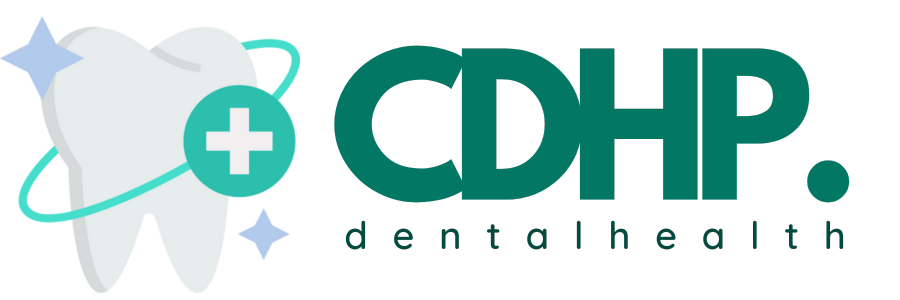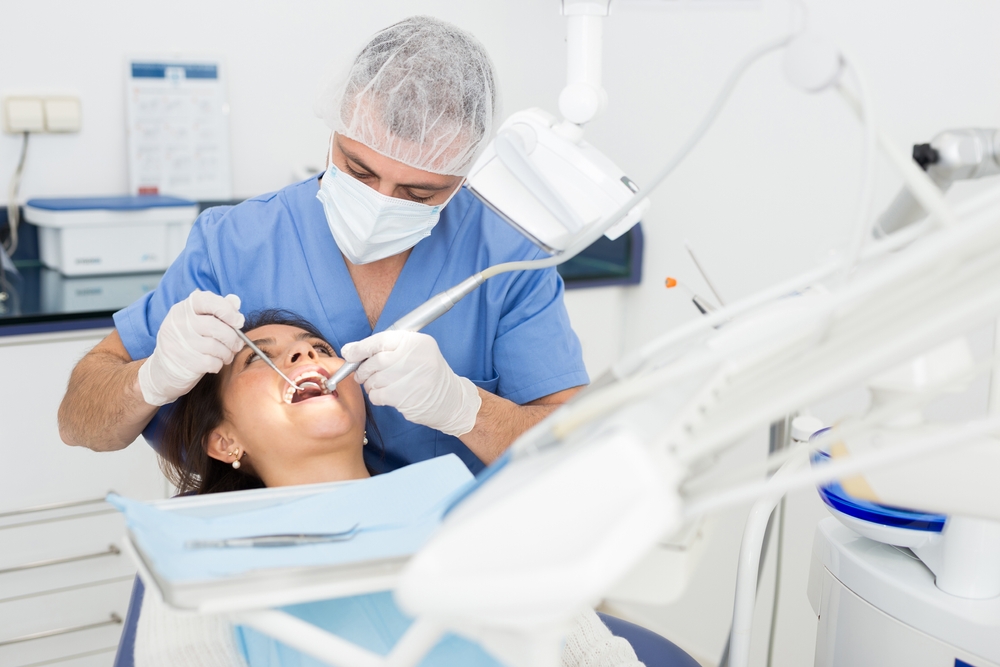Dental insurance and medical insurance are not on the same level. While dental insurance covers most routine procedures and limited extraneous.
Dental procedures may be covered by medical insurance if they meet certain criteria. In most situations, this includes treating a medical condition, acknowledgement of medical necessity, and utilization of the corresponding medical codes.
Billing medical insurance can alleviate costs, which is especially helpful in these situations. In order to do it successfully, you should understand what qualifies and how to increase your chances of medical insurance approving the claim.
Dental vs. Medical Insurance
Dental insurance coverage operates independently of whatever medical insurance you may have, and it usually follows a 100/80/50 coinsurance model. These plans cover 100 percent of preventative care, 80 percent of basic procedures, and 50 percent of major oral surgery once you meet the deductible as long as you operate in the network.
While 50 percent is better than nothing, it’s not great news for dire situations that affect your overall health. This is where your medical insurance plan comes into play.
Medical insurance tends to cover a greater percentage of necessary procedures, especially after you’ve met your deductible. They usually have higher annual maximums than dental coverage, and they can make a big difference in covering major procedures.
Unlike dental plans, medical will only cover the procedures in question if you’ve sustained trauma or you have a related medical condition.
Examples of Dental Procedures that Medical Insurance May Cover
Medical insurance varies greatly, and it’s not guaranteed that any of these examples will be covered by someone’s insurance plans. If possible, it’s best to call the number on the back of your insurance card to speak with someone about what your plan encompasses.
As you’ll see, most of these examples overlap in medical territory by:
- Diagnosing health issues
- Treating a problem through non-surgical means
- More invasive surgical treatment
- Addressing traumatic injuries in a timely fashion
Some procedures, like wisdom teeth extraction, occur on a case by case basis because they’re not always medically necessary. Use this section as a general guideline on what may be covered by medical insurance.
1. Diagnostic Procedures
Diagnostic procedures involve things like exams, consultations, stents, x-rays and other scans, and basically anything you would do to find the root of an issue. These differ from solely dental procedures, like x-rays to discover cavities, and instead cross over into a whole-health perspective.
Some examples include:
- CT scans and other medical imaging
- Head and neck evaluations (regarding orofacial medical issues)
- Clearance exams prior to chemotherapy or other surgeries
- Certain biopsies
- Panoramic x-rays
- CBCT and tomography
While these differ from routine checkups, your routine checkup may lead over into this territory.
2. Non-Surgical Medical Treatment
Non-surgical medical treatments for conditions that involve the orofacial area are also usually covered by medical insurance. These treatments and therapies should improve medical conditions and have proof that they are not a solely cosmetic treatment.
Some examples include:
- Sleep apnea devices
- TMD/TMJ appliances
- Treatment for facial pain
- Emergency infection or inflammation treatment, including drainage of abscesses
- Home fluoride trays (for patients going through cancer treatment
Non-surgical procedures may seem less necessary at first, but medical insurance should recognize the merit in limiting future, more costly and invasive health problems.
3. Surgical Procedures
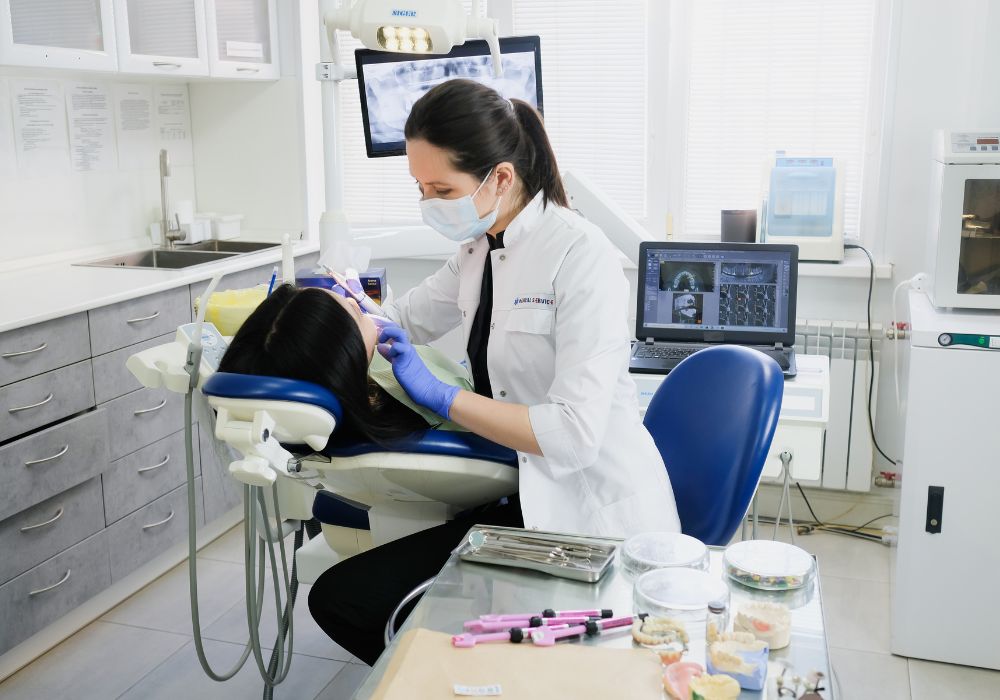
On the surface, surgical procedures seem like they would be easier to convey as medically necessary procedures. Because of the higher cost, we recommend pre authorization if you’re depending on insurance to cover the bill.
Some routine oral surgeries may be covered if you can relate them to whole-health issues. Others, like dental implants, can be more difficult to showcase as a medically necessary procedure rather than a cosmetic desire.
- Frenectomy (for younger patients, usually infants)
- Some extraction and placement of dental implants (if deemed medically necessary, usually under tooth root replacement)
- Oral surgeries to correct non-dental conditions
- Tissue biopsies
- Sinus augmentation
- Bone grafts
- Complicated surgeries (i.e. wisdom tooth surgery that requires more than standard dental procedure)
- Cyst removal
- Alveoloplasty
Keep in mind that parts of the surgery can be billed to medical insurance if your dental insurance won’t cover it. One example is the complicated wisdom tooth removal where dental may cover the original procedure while medical covers the additional general anesthesia.
4. Traumatic Injury Treatment
Emergency situations don’t leave much room for preauthorization, and insurance companies are little help as they try to pass the responsibility around. This is especially common when dealing with motor vehicle collisions, in which case you should bill the vehicle insurance first.
Other sources of emergency injuries include:
- Sports/athletics (i.e. jogging, gym time, recreational activities)
- Falls or other physical accidents
- Natural disasters
Basically anytime physical damage to your mouth falls under this category. Medical insurance should cover any restorative treatment needed to return your mouth to its original appearance and function, including surgeries, implants, prosthodontics, and endodontic treatments.
Dental Procedures that are NOT Covered by Medical Insurance
Sometimes it’s easier to understand what medical insurance will NOT cover.
This starts off with routine care, like semi-annual exams, x-rays (as part of preventative dental care), cosmetic treatments (like tooth whitening), or most preventative tooth extractions, root canals. In most cases, dental insurance plans should cover most of these expenses.
Your medical insurance will also want to pass off any expenses from automobile accidents to the appropriate liability insurance. If there’s anything left over, it can then be billed to medical.
Requirements for Medical Insurance to (Potentially) Cover Dental Procedures
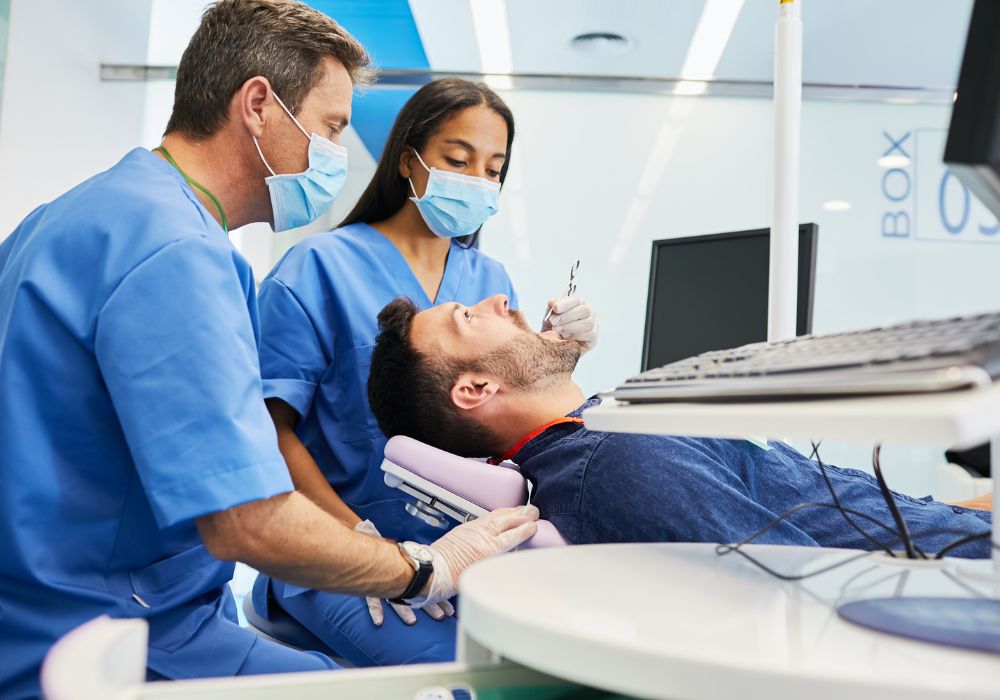
In short, for a dental procedure to qualify for medical insurance coverage, it should:
- Treat a medical condition
- Have proof of medical necessity
- Have a corresponding medical code
The weight of these conditions is more on the provider than the patient. Facilities with a good understanding of how to bill medical for these procedures or offices that utilize billing companies with the proper experience go a long way in saving their patients money.
Treats a Medical Condition
A dental procedure should be part of, if not all of, the treatment for a medical condition. This may include diagnostic procedures before expanding into surgical and non-surgical treatment.
This overlaps in the next stipulation, but understand that the motivation for the procedure cannot be solely dental. There needs to be some understanding that the problem area or symptoms affect other areas of health.
Bonus points if the dental procedure can be proven to prevent issues that medical insurance would be solely responsible for in the future. Emergency treatments are almost always covered because failure to receive proper, prompt care will snowball into a much larger issue.
Medically Necessary
Treating a medical condition is only half of it. The procedure should have proof of medical necessity. This is a fairly vague term used by health insurance companies, but it’s not clear what “medical necessity” means.
Your insurance plan or state of residence may provide a deeper definition on what medical necessity means.
According to the National Association of Insurance Commissioners, this usually refers to “diagnosis, treatment, cure, or relief of a health condition, illness, injury, or disease”. Treatment should be appropriate for the situation and not a product of convenience.
Your dentist may need to provide a “Letter of Medical Necessity” for your insurance to review. If the situation isn’t dire, you can have medical necessity predetermined by your insurance so there’s no guesswork involved.
Has a Corresponding Medical Code
The last section is more directed towards providers than patients. As always, you need to use the proper codes when billing insurance of any type. These codes outline details such as:
- The difficulty of the procedure
- The specific tooth or teeth involved
- Whether anesthesia or sedation is needed
The codes are then compared to the policy to determine what may or may not be covered. Unfortunately in this situation, dental and medical codes don’t operate in the same spaces.
Accurate medical cross-coding is essential to getting medical insurance to cover a dental procedure. In cases where there is no appropriate medical cross code, the CDT should still be given for full transparency and consideration. Use CMS 1500 when submitting.
It’s also important to note that if the dental procedure was not the primary procedure performed for this situation, the patient’s medical records should also show appropriate documentation of what led them there.
Increasing Your Chances of Getting Medical Insurance to Cover a Dental Procedure
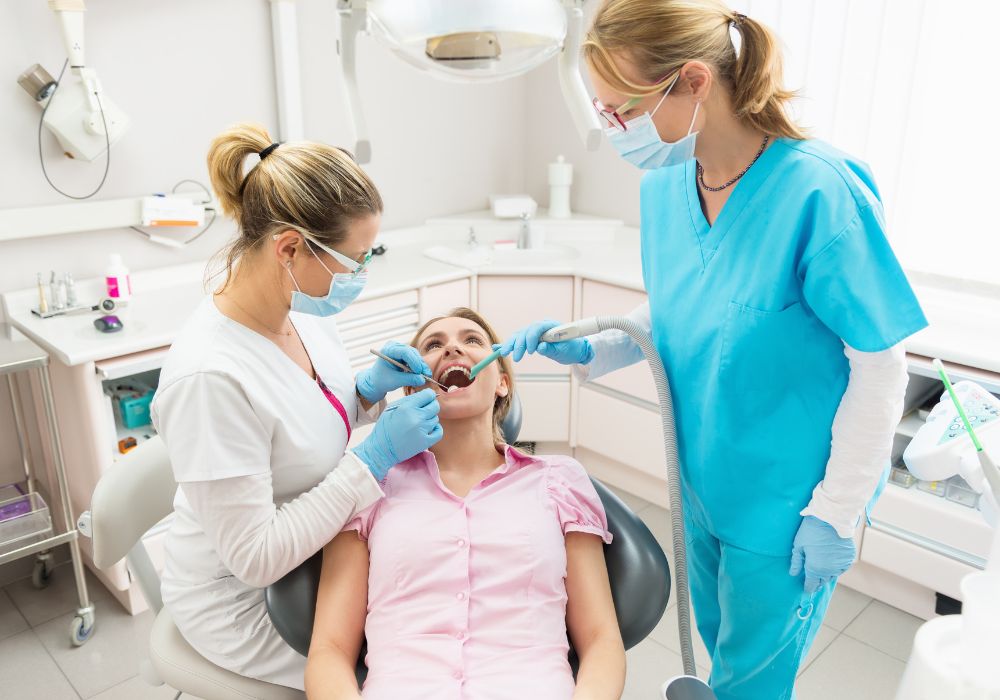
The more research you do regarding your medical plan, your specific condition, and the dental procedure involved, the greater your chances of getting medical insurance to cover the costs.
Lack of documentation puts you on the path to a denied claim, and it’s better to be over prepared than underprepared.
Whenever possible:
- Comb through your insurance policy with a fine-tooth comb
- Pursue preauthorization from your medical insurance for the procedure
- Choose dental surgeons with experience billing medical insurance for these procedures
Nothing will guarantee your insurer approves the claim, but the more you do the less opportunity they have to say “no”.
Understand Insurer Rules
Medical insurance is notoriously difficult to understand, and the fact that policies differ from situation to situation doesn’t help. You should receive plenty of documentation on what your plan covers, but understanding the information takes a bit of dedication.
Your Summary of Benefits and Coverage (SBC) and coverage agreement will be the most comprehensive document of what’s covered. The first is a general explanation of cover, while the latter (which goes by a number of names depending on the company) is a book that outlines your benefits.
Most companies provide digital copies automatically, requiring you to request a printed copy as needed. Choose a format that makes it easy for you to digest the information.
The summary will do little to actually explain what’s covered. Instead, you will need to sift through the (potentially hundreds) or pages in your coverage agreement to see what’s covered and what your expected contribution is. If you’re using a digital copy, you can utilize the search function to find the procedure in question.
In many cases, it’s just easier to call your insurance company and inquire about the rules directly. Make sure they understand why you’re calling, and try to learn about your overall policy instead of inquiring about the specific procedure. This will help you in the long run.
If you speak to someone, make sure you keep a record of your call, including who you spoke to and when the conversation occurred. This provides extra accountability when making the final claim for covering your dental procedure.
Pursue Preauthorization (When Possible)
Unless you’re dealing with an emergency situation, you should have time to document the need for your procedure and run it by your insurance. This ensures you’re not hit with a surprise bill, and it gives you time to perform any extra diagnostics they need to approve the claim.
It’s not uncommon for prior authorization to be denied. Your dentist will usually be able to explain the reason, but you can request it from your medical insurance directly. Don’t be afraid to tell them if you need the explanation in layman’s terms.
Denial may prompt you to provide additional documentation or attempt another treatment first. You can open an appeal or submit a new request with the updated details.
Work With Dental Surgeon With Experience in this Area
Choosing a dental care facility with experience in this area increases your chances of getting things right and may speed up the processes. Offices that outsource to dental billing companies also have greater success in speedy claims approval.
Insurance has many rules and procedures that are unique to the industry, and you benefit from someone who understands this area.
Conclusion
Covering your dental procedures using medical insurance alleviates your out-of-pocket costs, but it’s rarely a straightforward process. Obtaining the proper documentation and learning how to work with the system is necessary for a positive outcome.
If you’re wondering about a specific procedure, remember it must relate to a whole-health situation and have evidence supporting the medical necessity of the procedure. Whenever possible, pursue prior authorization to limit surprises and increase your chances of approval.
Don’t hesitate to ask any further questions you may have about covering dental procedures with medical insurance, whether that’s in our comment section or bringing it up to your practitioners.
